► What’s next for Audi?
► Two key options: electric TT or a Avus-style EV
► This article originally appeared in the March 2024 issue of CAR
Audi is close to making a final decision on how best to replace the TT, now that its quarter-century is up. It’s been a long, complicated process, and a decision Audi must get right or risk having a line-up short of a high-performance halo model just as it enters the high-profile arena of Formula 1 for the first time.
Our inside sources tell us four options are still in play, all of them drawing heavily on one or more of the plethora of acclaimed concepts displayed but not turned into production cars over the years. Many of those concepts in turn draw on the game-changing 1980 Quattro and 1998’s original TT.
Electric TT
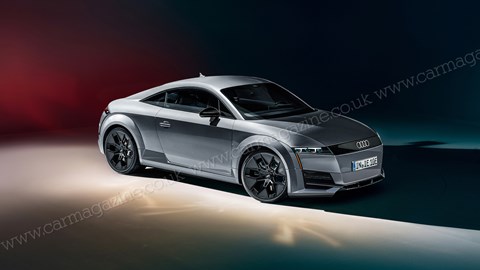
The most likely outcome – but certainly not the only possibility – is a more expensive, more powerful TT-style 2+2 electric coupe, drawing on EV expertise from around the VW Group. We’re now looking at 2026 (that’s when Audi enters F1) at the very earliest for the newcomer to be launched, but more likely 2027 or 2028.
To read more from CAR magazine, get our monthly magazine through your letterbox with FREE UK delivery or access digitally via our app. Find our best subscription offers HERE
The car that could hit the market first is a performance hybrid, but that idea is currently out of favour. More likely is a fully-electric coupe that combines elements of the zero-emissions next-generation Porsche Boxster/Cayman with the more advanced E3 1.2 software that’s also used in the imminent electric-only Porsche Macan.
The two choices: Avus Evo and TT Evo
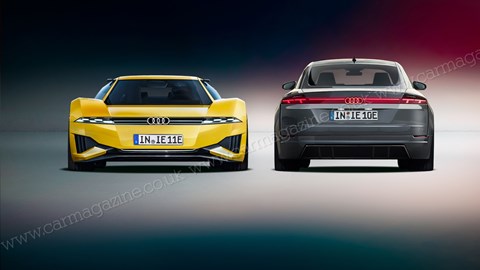
The front runners for the vacant role of Audi flagship are, we understand, all-electric coupes referred to internally as the Avus Evo and the TT Evo. They would use different versions of the VW Group’s SSP electric architecture, most likely SSP Sport for the TT Evo and SSP 61 for the Avus Evo.
If it morphs into a production car, the Avus Evo will be positioned as an all-new standalone car. Although it will look like nothing else, it would benefit technologically from the marque’s pivotal position in the VW Group. According to those in the know, Porsche will provide the cell chemistry with some assistance from Rimac, while Audi and the supplier Dräxlmeier will be in charge of building the power packs and drivetrain modules.
To read more from CAR magazine, get our monthly magazine through your letterbox with FREE UK delivery or access digitally via our app. Find our best subscription offers HERE
The battery is said to be rated at 127kWh, the combined output of the two motors is claimed to be 1341bhp, and the charging time from 10 to 80 per cent would come down to 10 minutes or less. Also still provisional are the 200mph top speed and the 2.5sec 0-62mph acceleration time.
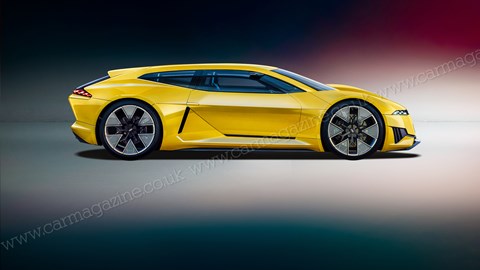
Which platform?
If the Avus theme turns out to be the chosen one, SSP61 is almost certainly the platform to go with. That is currently also the platform planned for the 2028 replacement for the e-Tron GT, twinned with the next Porsche Taycan. Which raises the question of whether Audi needs a state-of-the-art two-door 2+2-seater image builder and a
replacement for the e-Tron GT.
SSP61 has been a political hot potato within the VW Group, with ownership of the project swapping from Audi to Porsche, but that will not stop Audi being able to use it.
The TT Evo
The other frontrunner, the TT Evo, is not only less extreme and more affordable than the Avus counter-proposal, it could also go into production in late 2027, a full 12 months earlier than the likely on-sale date for the Avus project.
To read more from CAR magazine, get our monthly magazine through your letterbox with FREE UK delivery or access digitally via our app. Find our best subscription offers HERE
The TT Evo is expected to make use of the SSP Sport platform, which is a related but different EV architecture, again being masterminded chiefly by Porsche, with input from Audi among other VW Group brands. SSP Sport is described as an evolutionary DNA which incorporates components from the Boxster/Cayman electric twins.
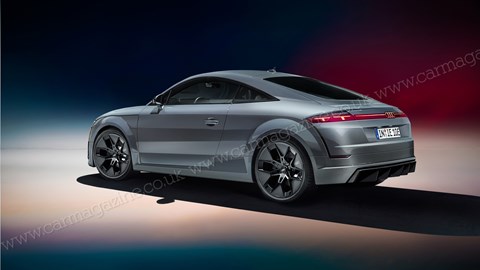
The SSP platform
Due to come on stream in late 2028 – two years behind the original launch schedule – SSP uses an 800-volt architecture, can charge with up to 400kW, and has a WLTP range of over 600 miles. It is also first to use the dramatically improved E3 2.0 operating system, introduces high-performance e-motors and is even fully prepared for Level 4 autonomous driving.
In SSP Sport – the even slicker SSP Sport architecture masterminded by Porsche for all of the group’s future high-performance EVs – the batteries feature a reduced cobalt content in favour of a less expensive and more environment-friendly lithium-ion chemistry.
Of the three different available energy packs (standard, power and high-performance), SSP Sport only installs the top-notch hardware, which will be packaged to spec by several suppliers. The platform is also designed to be compatible with solid-state batteries, if they ever arrive in a production-compatible form, after years of false hopes.
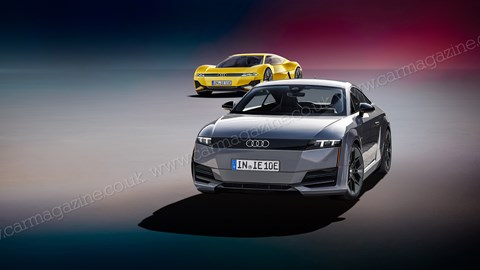
The combined power and torque can be dialled up into four-figure territory, but converting all that grunt into traction and ensuring top-notch handling qualities is of course a different matter. As far as the TT Evo goes, the output target numbers are in the area of 700bhp and 810lb ft.
Although the pricing and performance would both be far in excess of anything that the combustion-engined TT ever offered, expectations on both fronts have changed in the EV era. This would be a mass-production model, not a hand-built vanity project.
Audi is said to favour an aluminium spaceframe cell-to-pack architecture, reinforced with elements made of high-strength steel and carbonfibre.
Four-wheel drive and all-wheel steering are a given, as are active aerodynamics and a compact interconnected single-chamber air suspension system. That means there’s no need for physical anti-roll bars while introducing new features like automatic anti-dive and anti-squat properties, roll reduction in sync with the selected driving mode and an all-round lift function for rough terrain and extreme ramp angles.
To read more from CAR magazine, get our monthly magazine through your letterbox with FREE UK delivery or access digitally via our app. Find our best subscription offers HERE